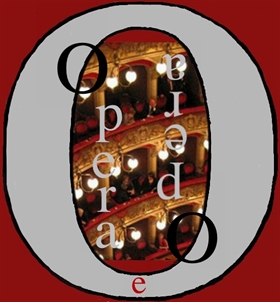 The view Raphael Parmigianino Barocci. Metaphors of the gaze, the Capitoline museums in Rome from 10/2/2015 to 1/10/2016 begins with a comparison that two artists lived in different times and places, Francesco Mazzola said the Parmigianino and Federico Fiori Barocci said, established against Raphael.
The view Raphael Parmigianino Barocci. Metaphors of the gaze, the Capitoline museums in Rome from 10/2/2015 to 1/10/2016 begins with a comparison that two artists lived in different times and places, Francesco Mazzola said the Parmigianino and Federico Fiori Barocci said, established against Raphael.

Both during his years in Rome received stimuli which determined artistic orientations, directing them towards more experimental Raphaelite research focal points. These researches are in the graphics expression understood in a broad sense of high level conceptual and aesthetic outcomes.
The exhibition therefore select in particular, although not exclusively, drawings, etchings and chiaroscuro, next to paintings and some example of ancient reliefs.
The exhibition is propone highlight as the model of Raphael have competed to determine artistic orientations of Parmigianino and those, quite different, Barocci. Parmigianino and Barocci are remembered in five – the seventeenth century as the heirs of Urbino and considered both among the most masterful artists of their era. Looking through the eyes of Parmigianino and Raphael with those of Barocci, thus the exhibition aims to address the the comparison and the theme of inheritance between artists who lived in different times and places.

While the Parmigianino spiritual legacy from Raffaello goes back to a story circulating in Rome shortly after the early death of Urbino – who spoke a transmigration of the soul of the latter on the youngest artist –, the nexus between Raphael and Barocci, from interpretations of the eighties of the ' 500, is rooted in the common homeland of origin.

For the two artists actually we should not talk to the painter's earliest influences but reworking of iconographic motifs, emulation and diversification over the originals of Raphael. In particular, in the case of Parmigianino the thorough examination of his work has allowed to overturn the terms of comparison and transform the Raphael redivivus in an alter Raphael, stating his otherness and originality than that model. How much to Barocci, he decline the raphaelesque legacydue to the common origin of Urbino, in a synthesis of different cultural traditions.
Raphael, Parmigianino and Barocci expressed themselves in their copious graphic production experimentally and with innovative strength. To tell this comparison at a distance, the exhibition in Rome will propose designs and prints of the three artists (including the study for the Deposition by Raphael, the studies for the frescoes of the basilica of Santa Maria della Steccata in Parma by Parmigianino and compositional study for the deposition of Perugia by Barocci), from the Department of prints and drawings of the Uffizi , from the Albertina in Vienna, by the Royal Library of Turin, from the British Museum and the Courtauld Institute Galleries of London from the Rijksprentenkabinet of Amsterdam, the Cabinet of drawings and prints of the National Museum of Capodimonte in Naples, the Stadel Art Museum in Frankfurt, from the National Gallery of Parma.

A highly targeted selection of paintings (for example, the Annunciation and the rest on the flight into Egypt by Barocci from the Pinacoteca of the Vatican) will invoke the main themes offered by graphics. The look of the protagonists of that ideal artistic dialogue, through their self-portraits (the amazing youthful Self-portrait by Raphael and the self-portrait of middle-aged Barocci, both from the Uffizi Gallery, and the two Self-portraits from the Albertina in Vienna and Parmigianino's from Chatsworth), will introduce the original location of this exposure.

SOURCE AND INFO MUSEUM CAPITOLINI And ROME TODAY

